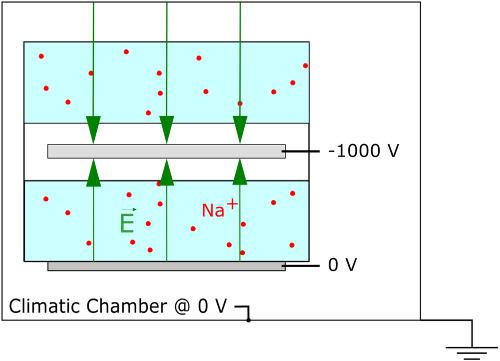当前位置:
X-MOL 学术
›
Prog. Photovoltaics
›
论文详情
Our official English website, www.x-mol.net, welcomes your
feedback! (Note: you will need to create a separate account there.)
Why and how to adapt PID testing for bifacial PV modules?
Progress in Photovoltaics ( IF 8.0 ) Pub Date : 2020-07-07 , DOI: 10.1002/pip.3311 Jorne Carolus 1, 2 , Robbe Breugelmans 1, 2 , John A. Tsanakas 2 , Arvid Heide 2 , Eszter Voroshazi 2 , Ward De Ceuninck 1, 2 , Michaël Daenen 1, 2
Progress in Photovoltaics ( IF 8.0 ) Pub Date : 2020-07-07 , DOI: 10.1002/pip.3311 Jorne Carolus 1, 2 , Robbe Breugelmans 1, 2 , John A. Tsanakas 2 , Arvid Heide 2 , Eszter Voroshazi 2 , Ward De Ceuninck 1, 2 , Michaël Daenen 1, 2
Affiliation

|
Recent research has shown that bifacial PV modules with a glass/glass packaging are prone to different PID mechanisms occurring simultaneously on the front and the rear side of the solar cell. With this in mind, researchers investigating the impact of PID on each side of the bifacial solar cell separately apply PID stress to one side of bifacial PV modules according to stress method (b) as described in the IEC TS 62804‐1, that is, contacting the surface with a conductive electrode. Yet, in this paper, we show that such practice of PID testing might result in an unintended development of an electric field between the environmental chamber and the nonstressed side of the solar cell. Through our experimental study, we reveal that this electric field results in unintended bifacial PID stress of bifacial solar cells, which goes along with misleading interpretations of the evolving PID mechanisms and susceptibility of bifacial PV modules. Next to the methodology concerns, we discuss three possible solutions to prevent such unintended PID mechanisms from occurring.
中文翻译:

为什么以及如何将PID测试应用于双面光伏组件?
最近的研究表明,带有玻璃/玻璃包装的双面光伏组件易于在太阳能电池的正面和背面同时出现不同的PID机制。考虑到这一点,研究人员根据IEC TS 62804-1中所述的应力方法(b)研究PID对双面太阳能电池每一侧的影响,分别将PID应力施加到双面PV模块的一侧。使表面与导电电极接触。但是,在本文中,我们证明了PID测试的这种实践可能会导致环境室与太阳能电池的非受力面之间的电场意外发展。通过我们的实验研究,我们发现该电场导致了双面太阳能电池的意外双面PID应力,随之而来的是对不断发展的PID机制和双面PV模块敏感性的误导性解释。除了方法论方面的关注之外,我们还讨论了三种可能的解决方案,以防止发生这种意外的PID机制。
更新日期:2020-09-15
中文翻译:

为什么以及如何将PID测试应用于双面光伏组件?
最近的研究表明,带有玻璃/玻璃包装的双面光伏组件易于在太阳能电池的正面和背面同时出现不同的PID机制。考虑到这一点,研究人员根据IEC TS 62804-1中所述的应力方法(b)研究PID对双面太阳能电池每一侧的影响,分别将PID应力施加到双面PV模块的一侧。使表面与导电电极接触。但是,在本文中,我们证明了PID测试的这种实践可能会导致环境室与太阳能电池的非受力面之间的电场意外发展。通过我们的实验研究,我们发现该电场导致了双面太阳能电池的意外双面PID应力,随之而来的是对不断发展的PID机制和双面PV模块敏感性的误导性解释。除了方法论方面的关注之外,我们还讨论了三种可能的解决方案,以防止发生这种意外的PID机制。









































 京公网安备 11010802027423号
京公网安备 11010802027423号